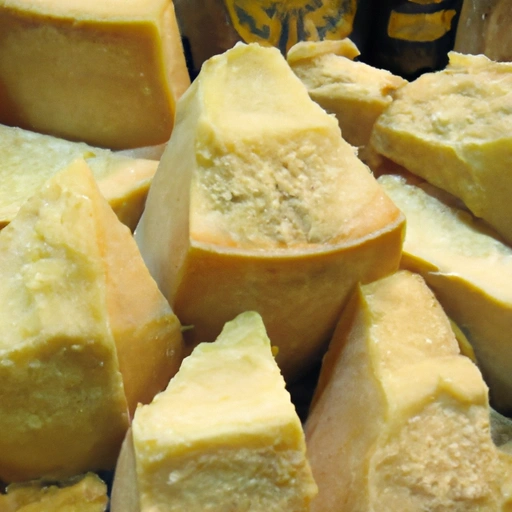Parmigiano-Reggiano
Description

Parmigiano-Reggiano, often referred to as 'Parmesan' in English, is a hard, granular cheese that is considered one of the most iconic Italian cheeses. Celebrated for its intense flavor and ability to enhance a wide range of dishes, it is produced using traditional methods that have been refined over centuries. This cheese is exclusively made in the provinces of Parma, Reggio Emilia, Modena, Bologna, and Mantua, with strict adherence to Protected Designation of Origin (PDO) status, ensuring its authenticity and quality.
Common uses
Parmigiano-Reggiano is commonly grated over pastas, used in soups and risottos, and eaten on its own as a snack. It is also an essential ingredient in many Italian dishes such as lasagna, and it is frequently used in salad dressings or as a topping for Caesar salad.
Nutritional value
Calories
A 1-ounce (28-gram or roughly 2 tablespoons) serving of Parmigiano-Reggiano contains approximately 110 calories.
Protein
The same serving size provides about 10 grams of protein, making it a great source of high-quality protein.
Fat
There are about 7 grams of fat in a 1-ounce serving, most of which is saturated fat.
Carbohydrates
Parmigiano-Reggiano has less than 1 gram of carbohydrates per serving, making it low in carbs.
Vitamins
It is a good source of vitamins such as B12 and B6, critical for nervous system health and energy metabolism.
Minerals
The cheese is rich in minerals like calcium, providing about 330 mg per ounce, and phosphorus, necessary for strong bones and teeth.
Health benefits
As a rich source of calcium and protein, Parmigiano-Reggiano can support bone health and muscle maintenance. It also contains bioactive compounds that may have beneficial effects on blood pressure and cardiovascular health.
Potential risks
Due to its high sodium content, individuals with hypertension or a need to follow a low-sodium diet should consume Parmigiano-Reggiano in moderation. The presence of dairy can also be an issue for those with lactose intolerance or dairy allergies.
Common recipes
Classic recipes include Parmesan-crusted chicken, eggplant Parmigiana, and spaghetti carbonara. It is also a key ingredient in Alfredo sauce and pesto.
Cooking methods
Parmigiano-Reggiano is often used as a finishing cheese, grated over dishes just before serving. It can also be baked into dishes for a crispy, cheesy crust.
Pairing with other ingredients
This cheese pairs wonderfully with a variety of foods, including fruits like pears and figs, nuts such as almonds and walnuts, and a range of wines, especially full-bodied reds or sparkling whites.
Summary
Parmigiano-Reggiano is a versatile and universally revered Italian cheese, known for its deep, nutty flavor and crystalline texture. Whether grated over pasta, incorporated into sauces, or savored on its own, this cheese adds a touch of gastronomic excellence to any dish. Its nutritional benefits are equally impressive, offering valuable proteins, minerals, and vitamins, though its sodium and fat content warrant mindful consumption.